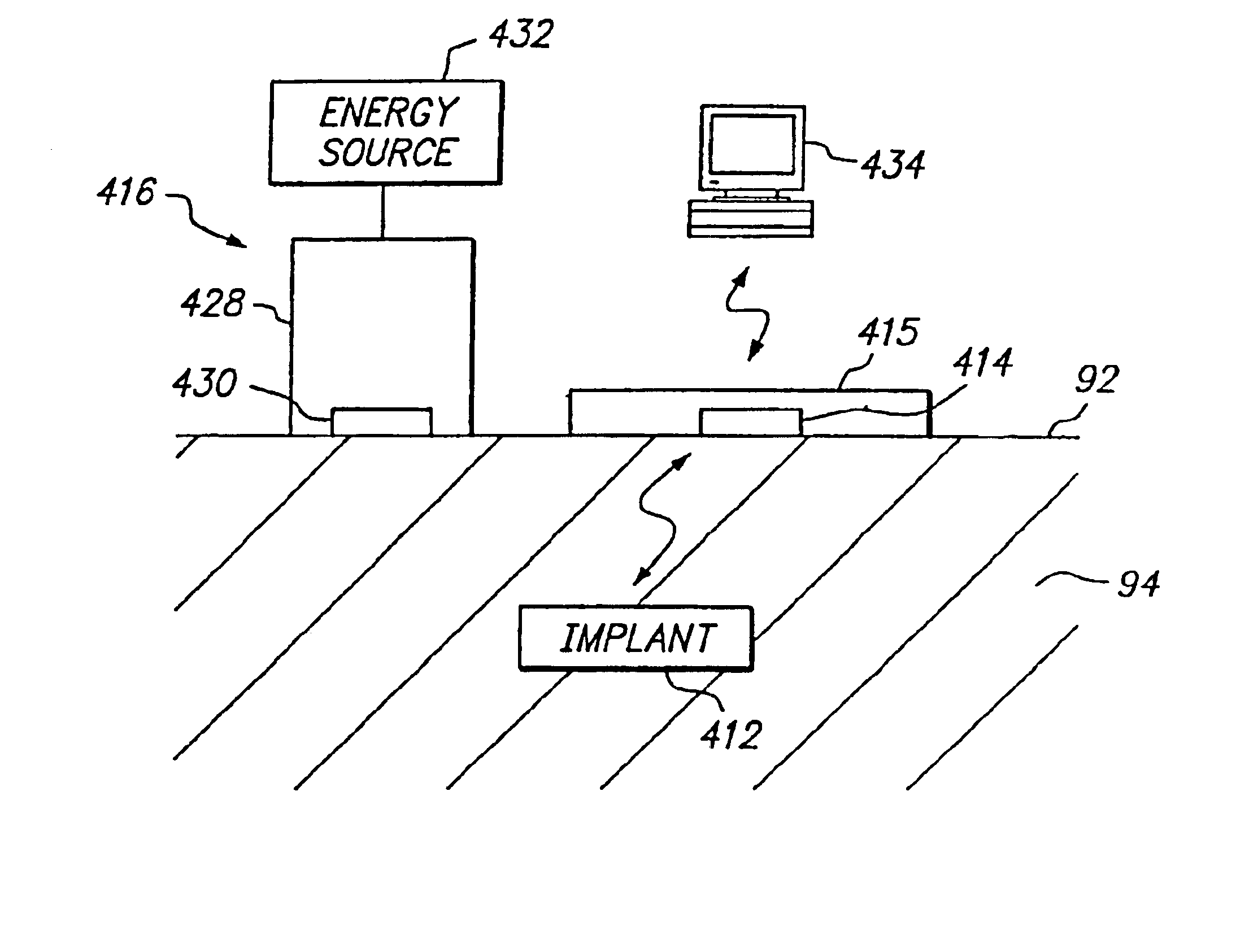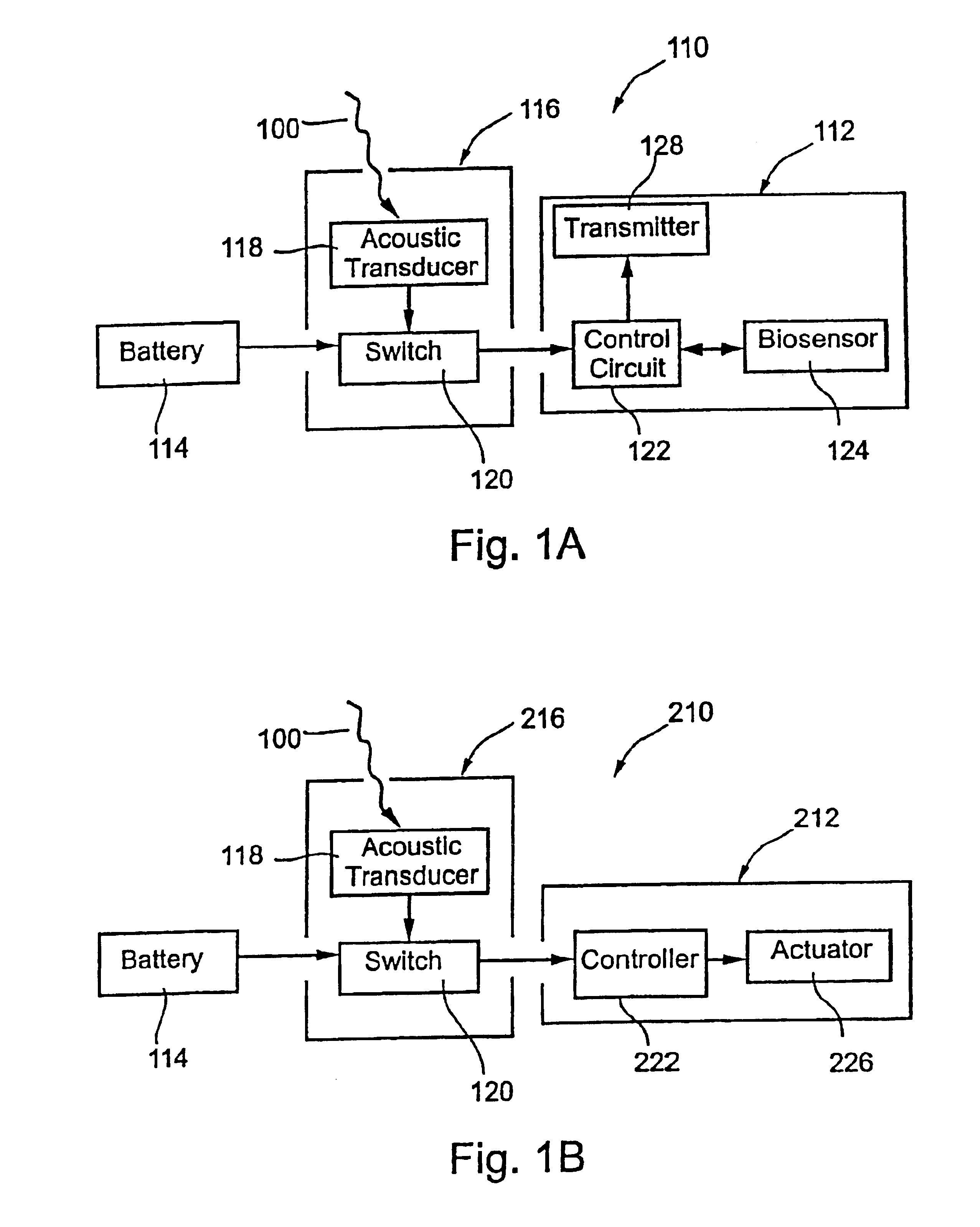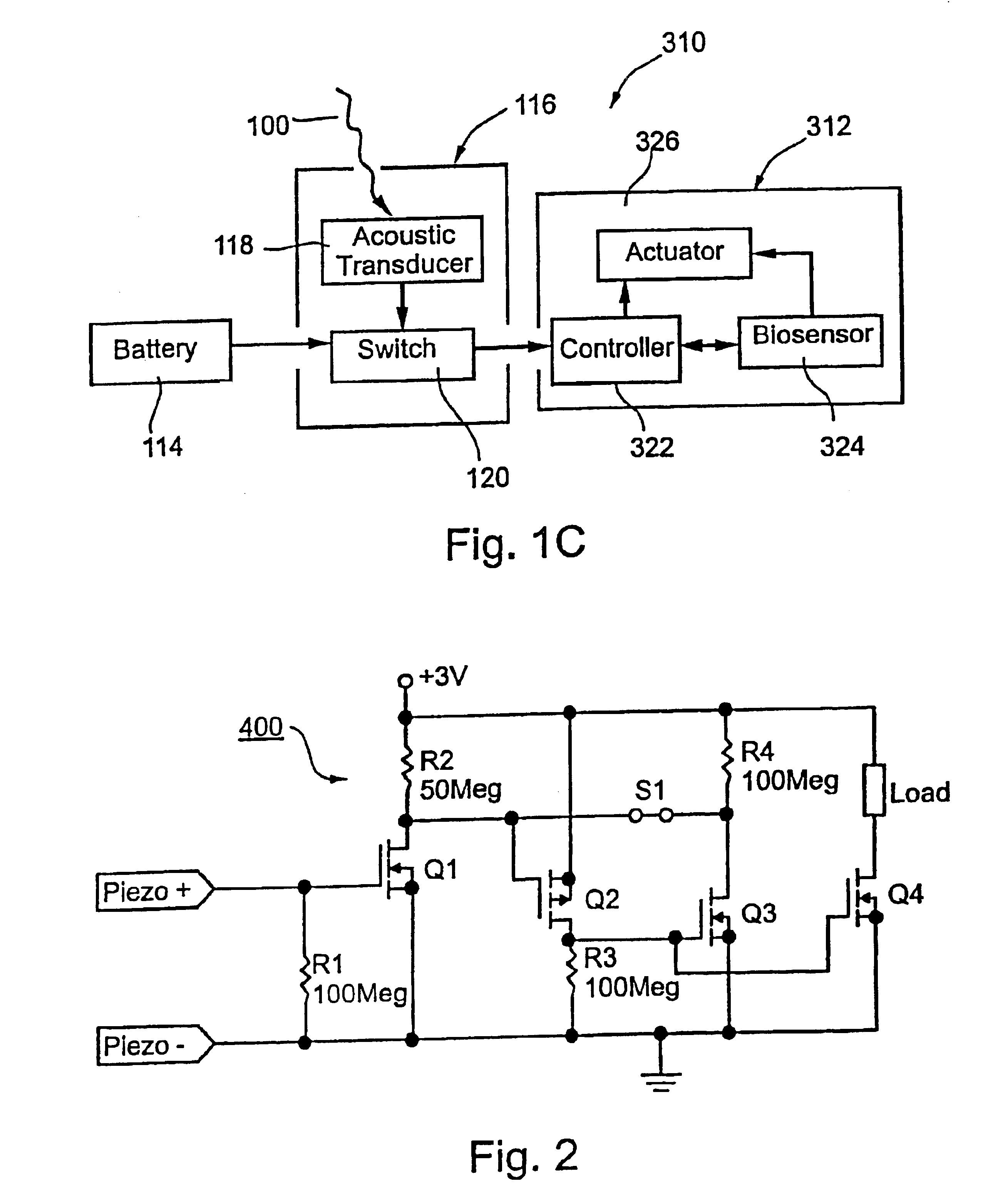Systems and methods for communicating with implantable devices
a technology of implantable devices and communication methods, applied in the field of systems and methods for controlling and/or energizing devices, can solve the problems of not being able to communicate effectively with implants located deep within the body, voltage that is too low to provide a reliable switching mechanism, and exposing the patient to false positives, so as to minimize the risk of accidental activation or deactivation of implants
- Summary
- Abstract
- Description
- Claims
- Application Information
AI Technical Summary
Benefits of technology
Problems solved by technology
Method used
Image
Examples
Embodiment Construction
[0024]Turning to the drawings, FIGS. 1A-1C schematically show several exemplary embodiments of an implant 110, 210, 310, in accordance with the present invention. Generally, the implant 110, 210, 310 includes an electrical circuit 112, 212, 312 configured for performing one or more functions or commands when the implant 110, 210, 310 is activated, as described furtherbelow. In addition, the implant 110, 210, 310 includes an energy storage device 114 and optionally may include a switch 116 coupled to the electrical circuit 112, 212, 312 and the energy storage device 114. The switch 116 may be activated upon acoustic excitation 100 from an external acoustic energy source (not shown) to allow current flow from the energy storage device 114 to the electrical circuit 112, 212, 312.
[0025]In a preferred embodiment, the switch 116 includes an acoustic transducer 118, such as that disclosed in PCT Publication No. WO 99 / 34,453, published Jul. 8, 1999, or in U.S. application Ser. No. 09 / 888,27...
PUM
 Login to View More
Login to View More Abstract
Description
Claims
Application Information
 Login to View More
Login to View More - R&D
- Intellectual Property
- Life Sciences
- Materials
- Tech Scout
- Unparalleled Data Quality
- Higher Quality Content
- 60% Fewer Hallucinations
Browse by: Latest US Patents, China's latest patents, Technical Efficacy Thesaurus, Application Domain, Technology Topic, Popular Technical Reports.
© 2025 PatSnap. All rights reserved.Legal|Privacy policy|Modern Slavery Act Transparency Statement|Sitemap|About US| Contact US: help@patsnap.com



